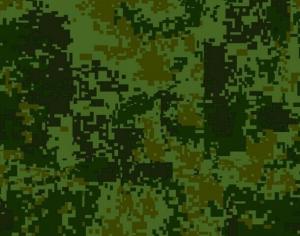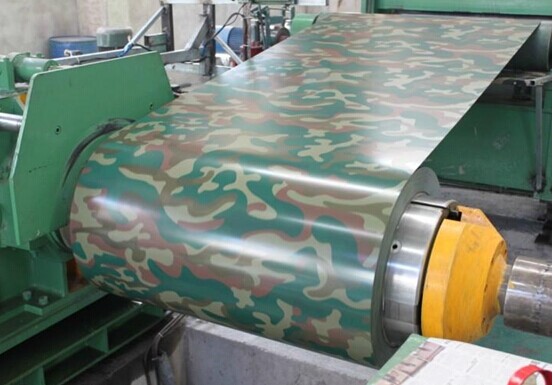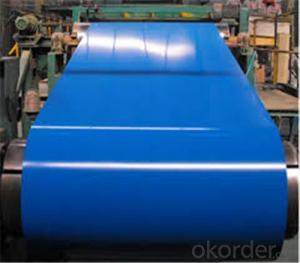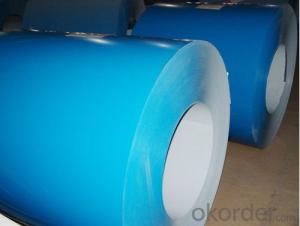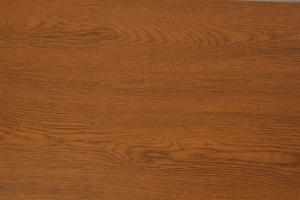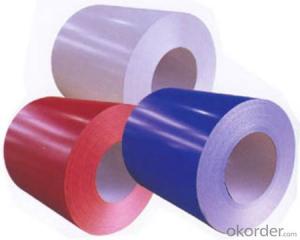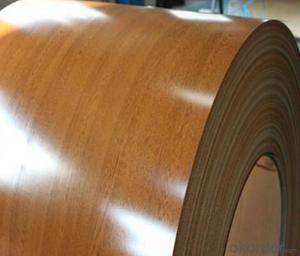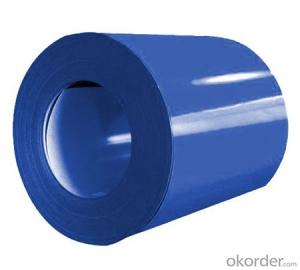PRINGTING STEEL---camouflage pattern
- Loading Port:
- China Main Port
- Payment Terms:
- TT OR LC
- Min Order Qty:
- -
- Supply Capability:
- -
OKorder Service Pledge
OKorder Financial Service
You Might Also Like
Quick Details
Standard: | ASTM,GB,JIS | Grade: | SGCC | Thickness: | 0.2mm-1.2mm |
Place of Origin: | Jiangsu China (Mainland) | Brand Name: | EAST STEEL | Type: | Steel Coil |
Technique: | Cold Rolled | Surface Treatment: | Coated | Application: | Other |
Special Use: | Wear Resistant Steel | Width: | 800mm-16000mm | Length: | as customer's required |
Specifications
1) Manufacturer of Galvanized Steel Coil
2) Superior quality with moderate price
3) Wide size range
4) Quick delivery
items | thickness | TYPE | Features |
Protection film | 50μm | polyethylene | Protecting from scratchs and contamination (Option) |
Finished coat | 10μm | PVDF | Protecting printed layer and enhances the appearance of the surfaces |
1μm | Ink, Polyester | Various printing patterns,3 color overprint | |
Top coat | 20μm | Polyester Fluorine | Chemical resistance, formability and patterns multiformity |
Primer coat | 5μm | Polyester | workability, corrosion resistance and adhesion to the primer coating |
Chemical treatment | 1μm | Chromate | Good adhesion and corrosion resistance |
substrate | 0.2-1.2mm | GI.GL.AL | GI.GL,AL |
Chemical treatment | 1μm | Chromate | Good adhesion and corrosion resistance |
Back coat | 5μm | Epoxy | corrosion resistance and adhesion to the substrate |
- Q: How are steel coils used in the manufacturing of electrical transformers?
- Steel coils are used in the manufacturing of electrical transformers as they provide a strong and durable core for the transformer. The coils are typically made of high-grade electrical steel, which has low electrical resistance and high magnetic permeability. These properties allow the coils to efficiently conduct and transform electrical energy, ensuring the proper functioning of the transformer.
- Q: How are steel coils used in the production of steel nails?
- Steel coils are used in the production of steel nails as they serve as the primary raw material. These coils are unwound and fed into a nail-making machine, where they are cut into the desired length and shaped into nails.
- Q: Are steel coils used in construction?
- Yes, steel coils are commonly used in construction. They are used for various applications such as structural framing, roofing, walls, and other components in buildings and infrastructure projects. Steel coils provide strength, durability, and flexibility, making them a popular choice in construction.
- Q: steel bollard poles?
- There those short yellow post's the are too short to see when you back into them.
- Q: What are the common defects in steel coil surface finishes?
- Scratches, pits, rust, oil stains, and uneven coating are all common defects that can be found on the surface finishes of steel coils. Scratches are typically caused by mishandling or transportation and can significantly impact both the appearance and performance of the coil. Pits, on the other hand, are small depressions that can be attributed to various factors such as impurities in the steel or incorrect processing techniques. Rust occurs when the coil is exposed to moisture or corrosive environments, and this can compromise the structural integrity of the material. If the coil is not adequately cleaned before or after processing, oil stains may appear, leaving unattractive marks on the surface. Lastly, uneven coating can arise during the application of protective coatings or paints, resulting in varying levels of protection and aesthetics across different areas of the coil. It is crucial to address these defects to ensure the steel coil's quality and durability in its intended applications.
- Q: How do steel coils compare to aluminum coils?
- Steel coils are generally stronger and more durable than aluminum coils. They have a higher tensile strength and better resistance to impact and abrasion. However, aluminum coils are lighter, more corrosion-resistant, and have better thermal conductivity. The choice between steel and aluminum coils depends on the specific application and the desired characteristics such as strength, weight, and corrosion resistance.
- Q: How are steel coils used in the production of industrial boilers?
- Steel coils are used in the production of industrial boilers as they are fabricated into various components such as tubes, headers, and drums. These coils provide strength and durability to withstand high pressure and temperature conditions in boilers. Additionally, the coils are often used for heat exchange purposes, ensuring efficient transfer of thermal energy within the boiler system.
- Q: How are steel coils used in the production of containers?
- Steel coils are used in the production of containers as they are the primary material for manufacturing container bodies. These coils are shaped and welded into the desired container shape, providing strength and durability to the final product.
- Q: What are the safety regulations for steel coil production facilities?
- Safety regulations for steel coil production facilities vary depending on the specific country or region, but there are some common safety measures that are typically implemented in these facilities. One key safety regulation is the proper training and education of employees. All workers in steel coil production facilities should be trained on the potential hazards they may encounter, as well as the proper safety procedures to follow. This includes training on handling heavy machinery, operating cranes or forklifts, and understanding the risks associated with working in a high-temperature environment. Another important safety regulation is the maintenance and inspection of equipment. Regular inspections of machinery and equipment should be conducted to ensure they are in proper working condition and do not pose any safety risks. Furthermore, maintenance procedures should be implemented to address any issues or malfunctions promptly. Fire safety is also a crucial aspect of safety regulations in steel coil production facilities. Fire prevention measures such as the installation of fire alarms, sprinkler systems, and fire extinguishers should be in place. Regular fire drills should also be conducted to ensure that all employees are aware of the evacuation procedures and can respond quickly and effectively in case of a fire emergency. Personal protective equipment (PPE) is another vital safety requirement in steel coil production facilities. Employees should be provided with appropriate PPE such as safety glasses, helmets, gloves, and steel-toed boots to protect them from potential hazards such as falling objects, sharp edges, and high temperatures. Additionally, safety regulations often require the implementation of safety barriers and guards around machinery and equipment to prevent accidents and injuries. This includes safety gates, railings, and protective covers to restrict access to hazardous areas and prevent unauthorized entry. Regular safety audits and inspections should be conducted by relevant authorities or safety professionals to ensure compliance with safety regulations. Companies should also encourage a culture of safety by promoting open communication about safety concerns, providing safety training and refresher courses, and rewarding employees for their adherence to safety protocols. It is important to note that safety regulations may vary from one jurisdiction to another, and it is always advisable to consult the specific regulations applicable in the country or region where the steel coil production facility is located.
- Q: How do steel coils contribute to the sustainability of construction projects?
- Steel coils contribute to the sustainability of construction projects in several ways. Firstly, steel is a highly durable material that can withstand harsh weather conditions, reducing the need for frequent repairs or replacements in buildings and infrastructure. Additionally, steel coils can be recycled, reducing the demand for virgin materials and minimizing waste. The use of steel in construction also enables the creation of lightweight and energy-efficient structures, promoting sustainability by reducing the energy consumption required for heating, cooling, and transportation.
Send your message to us
PRINGTING STEEL---camouflage pattern
- Loading Port:
- China Main Port
- Payment Terms:
- TT OR LC
- Min Order Qty:
- -
- Supply Capability:
- -
OKorder Service Pledge
OKorder Financial Service
Similar products
Hot products
Hot Searches
Related keywords
